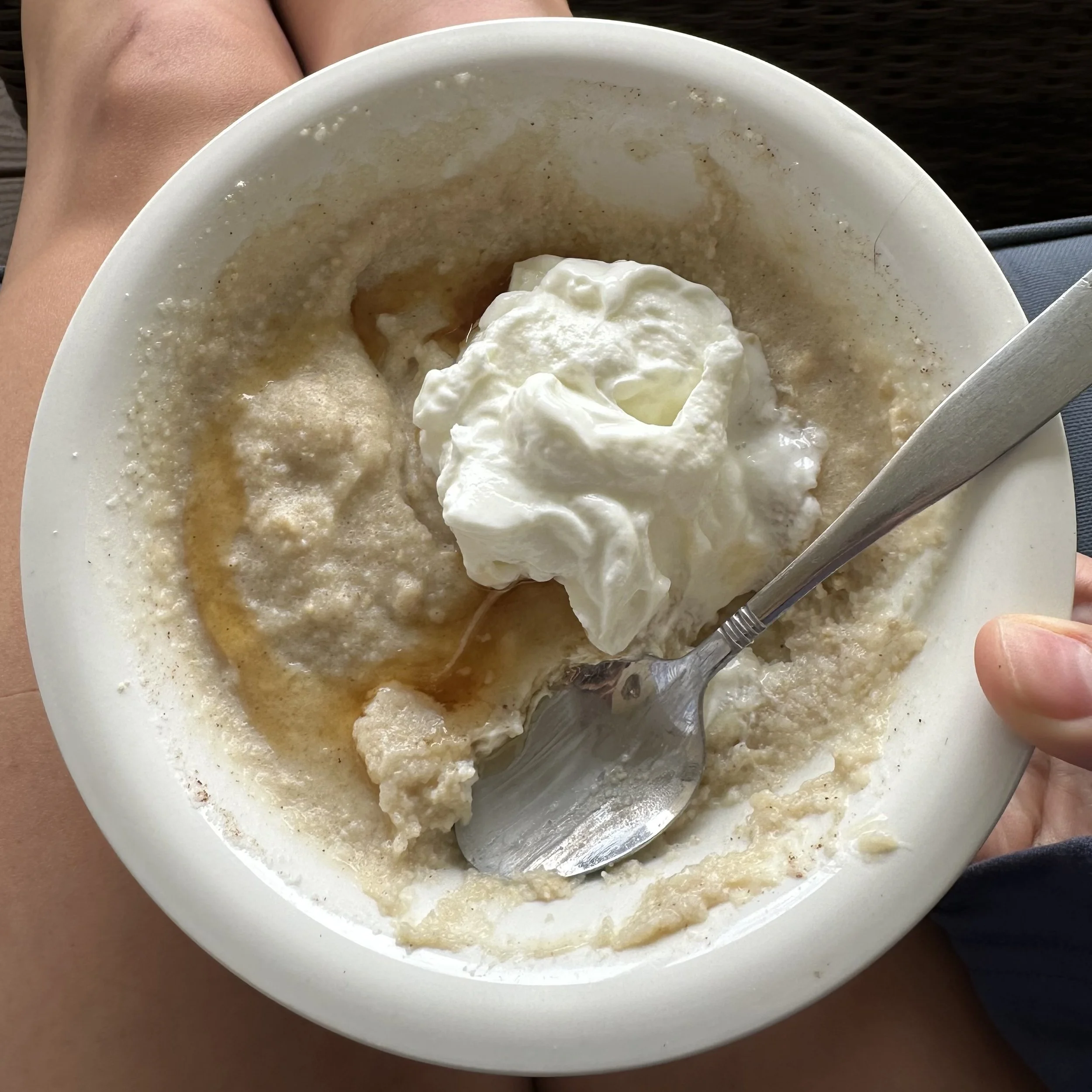How to Build Healthy Eating Habits that are Enjoyable
Finding balance and being consistent are key to a lifestyle of healthy eating.
If there is a question I get asked the most, it’s, “hey, can you help me with a meal plan or tips on how to start eating healthier?” When it comes to reaching your fitness goals, the time and energy you put into your activities is just part of your progress. If you aren’t fueling and refueling properly, then you aren’t going to see the results you desire, whether that is to be become a faster hiker, build more muscle mass, or improve your general health. Although that may not be the news you want to hear, you’ll be pleased to know that eating healthy isn’t as miserable as you think. In fact, once you learn which foods work for your goals, you’ll start to enjoy the way you eat much more, especially when you start seeing progress.
Once you learn how to nourish your body properly, you’ll discover that you can still enjoy life. I still eat foods like chocolate and go out to dinner with my friends on random week days. Remember, this is a lifestyle, not a restriction. Here are my tips on how to build eating habits that are enjoyable.
The best power bowl
Enjoying a nutrient-dense meal in the mountains of Zermatt, Switzerland.
1. Build a healthier mindset around food
This one may sound strange, but unhealthy eating habits start in your mind. Have you ever heard someone say that they stopped craving junk food once they stopped eating it, or that they don’t even want sugar anymore once they limit it in their diet? This is because of the chemicals in our brain. According to RMIT University, our brains experience pleasure when we consume junk food due to an increase in dopamine, a happy chemical in the brain. Therefore, our brains crave more junk food to feel good.
Like any habit, eliminating junk food will be difficult at first, but once you do so, you’ll start to crave the donuts less and the whole grains and vegetables more—trust me. If you journal, you can build a healthier mindset around food by writing down your gratitude for nourishing foods and feeling strong from eating well, such as, “I am grateful for healthy meals” or, “eating healthy makes me a happier person.”
2. Talk to a nutritionist
The best way to build healthier eating habits is to have someone in your corner who can hold you accountable and guide you through your nutrition. By hiring a nutritionist or certified personal trainer (CPT), you will receive professional nutrition advice and custom meal plans based on your preferences and goals. A nutritionist will also educate you on everything from micronutrients and macronutrients to finding a healthy balance with your nutrition. Plus, hiring a professional makes the entire process of building healthy eating habits much more digestible (no pun intended).
3. Plan your meals ahead of time
In my opinion, this is one of the most important steps when it comes to building healthy eating habits. Too often, people do not make time to go to the grocery store and prep their meals in their down time. Therefore, they end up spending money on fast food or snacks that may not be nutrient-dense.
When I know that I am going to be out of the house for most of the day, I always make sure to plan what meals I need, depending on how long I will be away for. This could be something like chicken and vegetables or a protein bar. It may be easier to just buy food on the go, but by putting in that extra effort to plan your nutrition for the day ahead of time, you are one step closer to building a lifestyle around healthy eating. Plus, you’ll also save some money.
4. Find foods that you enjoy
One of the quickest ways to fall off healthy eating habits is by forcing yourself to eat foods that you hate because they’re “healthy.” I have been eating the same types of food everyday for almost a year. When I tell people that, they often say, “how do you not get sick of the same foods?” The reason I still look forward to my cream of rice every morning, yogurt and protein after the gym, and all of my other meals is because I genuinely love the foods I eat. I find creative ways to make meals like chicken and rice taste delicious by adding flavors, such as Melinda’s Thai Sweet Chili Sauce.
One of my top meals
Cream of rice is an easily digestible carbohydrate, making it great for before or after a workout.
Here are some healthy meal ideas to help you get started:
Cream of rice and protein powder with blueberries and honey.
Yogurt, nuts, fruit, and honey.
Oatmeal and nut butter with a side of egg whites.
Chicken breast, broccoli, and whole grain pasta with olive oil and sea salt.
Ground chicken, white rice, and mixed vegetables.
Steak tips, baked potato, and broccoli.
Salmon, sweet potato, and asparagus.
5. Time your macros properly
Macronutrients, often referred to as “macros,” are the proteins, fats, and carbohydrates found in food, and they each play a different role in your body. Protein helps us grow and repair cells, meaning a proper amount needs to be consumed in order to put on and maintain muscle mass, which varies per individual. For example, a 200-pound, male bodybuilder will require much more protein per day than a 130-pound, moderately active female. Carbohydrates are the body’s main source of energy, which is essential for exercise. Fats allow us to feel full, absorb certain nutrients, and help with balancing hormones. Having a healthy balance of all three macronutrients is essential.
To optimize your health and fitness goals, I recommend working with a nutritionist or CPT to assess what your macros should be. If you are an intuitive eater, simply just focus on eating certain macronutrients at proper times. For example, it’s best to eat protein and carbohydrates around exercise, since protein helps with building and maintaining muscle, while carbohydrates provide your body with energy.
Fats are the most calorie-rich macronutrient, and they digest slowly. Therefore, you should avoid eating them around your workout so your body can absorb the protein and carbohydrates you consume more quickly in order to optimize their benefits.
6. Balance the nutrients on your plate
Not only it is important to have a diet that is balanced in macronutrients, regardless of whether you track them or eat intuitively, micronutrients are important to include as well. Micronutrients are the vitamins and minerals that your body needs. In order to ensure you get enough of them into your diet, focus on eating a variety of fruits and vegetables. Without the proper amount of micronutrients, your body may have deficiencies, which can lead to other health issues.
7. Don’t skip meals
More often than not, I hear people say that they “forgot to eat” or “just had coffee for breakfast.” When it comes to building healthier eating habits, be mindful of getting in your meals, whether that’s three normal-size meals or multiple smaller meals throughout the day. Missing meals can slow down your metabolism, which can lead to weight gain or make it harder to lose weight. Every individual will have different calorie needs to reach their wellness goals. Working with a nutritionist ensures that you’re getting in the proper amount of nutrients to fuel your body on a daily basis.
8. Leave room for treats
Enjoying a glass of wine at Fluhalp Hut in Switzerland.
Sometimes, I love going out for a big glass of wine and charcuterie board, or to try a little bit of everything from the food trucks at an event. No matter what your fitness goals are, creating space for balance is just as important as staying on track with your goals. I suggest following an 80/20 rule: eat well 80 percent of the time, and spend 20 percent of the time enjoying meals with family, having a drink with friends, or eating the cookie.
Without balance, you may end up resenting your healthy eating habits, which can make it more difficult to stick with them. The key is to get back on track the next day and to not let one treat turn into a bad habit. Like anything, consistency is more important than perfection. You got this!




